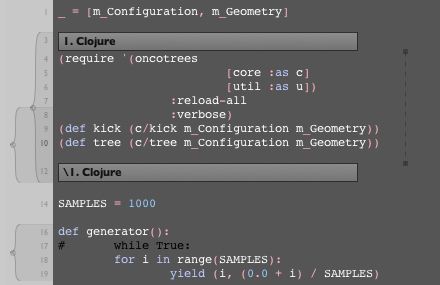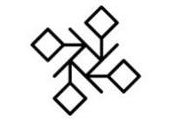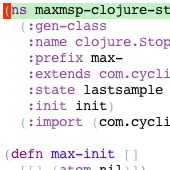As half of Monomatic, I contributed an algorithmic video piece to a set of works entitled Whitney Evolved, projected at the Kinetica Art Fair last month. (Other contributors included Lewis Sykes, Evan Raskob, Mick Grierson and Paul Prudence.) Each work was inspired by the early animation work of John Whitney Senior, much of which was done using mechanical equipment many years before computers became powerful enough to render his images in real time.
This particular piece takes Whitney’s basic “rose” pattern and duplicates it into translucent layers of discs, rotating at arithmetically related speeds so that the layers drift into and out of various patterns of alignment. The virtual camera performs a continuous slow pan around the structure from poles to equator, its distance varying as it orbits.
Technology: the Whitney algorithm is written in Clojure and hosted in Field, which takes care of the OpenGL display. Projection in the P3 Ambika space courtesy of a pair of the inevitable Barco FX-20s.



